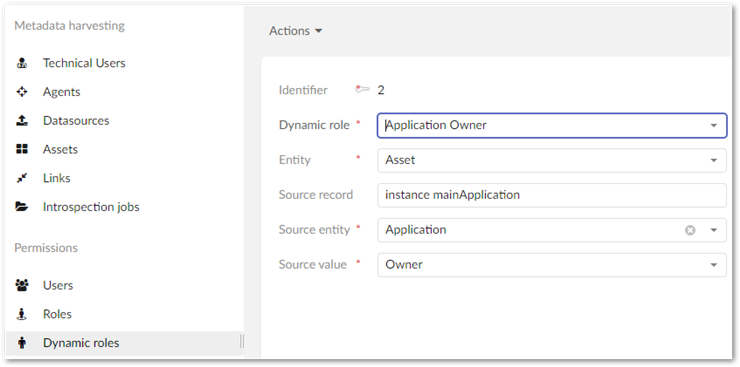User roles
Dynamic roles
A role is dynamic when it is relative to data. When a static role can be given to a group of persons for all occurrences of a particular entity, a dynamic role can be given to a different group of users for each record. For instance, the owner of a given occurrence of an entity can be set as a field of this occurrence which refers to a group of persons. This group itself refers to a static role. Going through these relations we can then link an occurrence to a static role. The Dynamic role thus describes how to resolve static roles for a given occurrence based on its values.
The configuration of dynamic roles is made from the Metadata Administration perspective.

For each dynamic role, a resolution path can be defined from entities. In the example below, the application owner can be resolved for a given Asset by getting its containing Instance and the main Application of this Instance. Now that the source record has been retrieved following the specified path, we can get the source value (Owner here) which must be a reference to a Group. This group being linked to a static role, the dynamic role can be resolved by this static role.
The value that must fill the field Source record can be an empty string if the source value is directly in the current occurrence of the chosen entity. Otherwise, it should be a succession of paths to foreign keys or associations within the records we consult.

Main tab
Field Description Identifier This field is mandatory. The identifier is automatically generated. This cannot be modified. Dynamic role This field is mandatory. Define which dynamic role this plan will resolve. Entity The entity from which we want to resolve the dynamic role. An occurrence of this entity will be the starting point of the resolution. Source record List of successive paths to references separated by a space. If empty, the source record is the current occurrence of the entity defined in the previous field Entity. Source entity This field is mandatory.